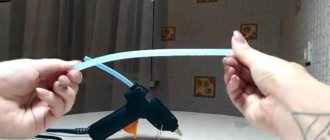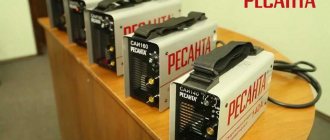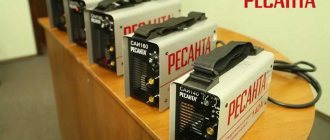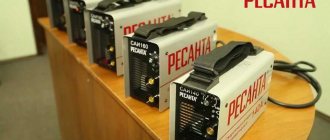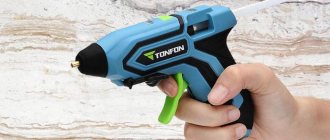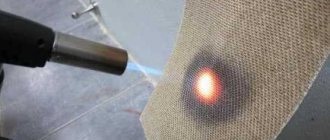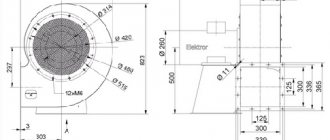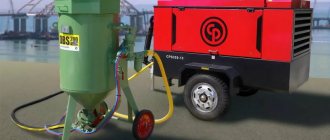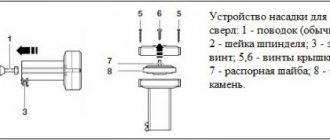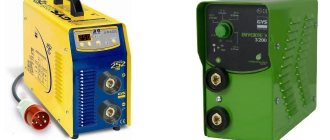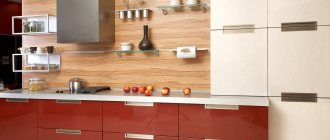Recently, the market continues to surprise with new products, in particular, now we will talk about hot-melt adhesive.
Heat gun glue is a substance that acquires a viscous consistency when heated to a certain temperature. In this form it is applied to the surfaces to be bonded. After the glue has completely cooled, it finally hardens.
The most important thing is that hot-melt adhesive is suitable for almost everything and cools down literally immediately. It is suitable for concrete, plaster, wood and paper, cardboard, fabric, metal, plastic and other materials. You can use glued things in just 5-10 minutes. Ultimately, we have a very high-quality joining of materials.
Hot-melt adhesive glues the parts together so firmly that after complete drying it is unlikely to be possible to tear them apart from each other. Most likely, a break or tear will occur near the gluing site. Mainly due to these characteristics, this composition can be called a real superglue.
Glue gun device
The schematic diagram of all models is the same. In the process of evolution, the optimal design of the device was determined. One glue gun can differ from another only in the quality of the material from which it is made, power and a set of additional functions. The device consists of:
- housings;
- guide coupling;
- mechanism for advancing the glue stick;
- thermal camera;
- nozzles
Power can be supplied from the mains or autonomously from a battery. Having the device at hand, repairing broken items at home can be done within a few minutes.
The operation takes much less time than using traditional adhesives. The device is reliable and does not consume much energy. If you have an electric glue gun, you need to know what you can glue and how to choose the right model.
Raw materials
The following polymers can be used as the basis for the production of thermoplastic adhesives:
- Ethylene vinyl acetate (EVA)
- Polyamide (PA)
- Polyolefins (PE polyethylene, PPR polypropylene)
- Polyester
- Synthetic rubber
- Amorphous polyalphaolefin (APAO)
- Reactive polyurethane (PUR)
Each polymer imparts special properties to the final product.
For example, polyolefin-based adhesives bond to the most difficult surfaces and also include additives for cleaning equipment. Synthetic rubber based adhesives remain permanently tacky indefinitely. Base polymers make up approximately 50% of the total composition. The composition of hot melt adhesive also includes waxes, plasticizers, antioxidants and other fillers that provide the finished product with the necessary plasticity, adhesion, resistance to embrittlement and ultraviolet radiation. To give a specific color, hot melt adhesive contains pigments. Inert additives, such as chalk, titanium dioxide, zinc oxide, allow you to reach the required proportions and also reduce the cost of the final product.
Professional and household hot glue guns
The first thing potential buyers pay attention to is the price. Why is there such a significant difference with the same design? The answer is simple - professional equipment is designed for uninterrupted operation, so during production a power reserve is built in.
The trigger and rod feed mechanism are made of more durable, wear-resistant material. For more precise adjustment to the special rods used, a temperature regulator can be built into a professional glue gun. What can be glued and what is the difference compared to a household analogue? Basically none. The list of materials is the same.
Household models typically range from 40W to 150W. This is quite enough for home use, making crafts, and practicing your favorite hobby. Industrial designs can have a power of up to 500 W.
This is needed to quickly melt the glue, when it is important to constantly maintain high consumption, for example, when assembling boxes or fixing tags on packaging. For a home user, such performance is not needed.
Who is handyman?
Handyman is almost as popular in America as Supermen. Just targeting different age groups. All American teenagers dream of becoming supermen in order to “save the world.” Many of them, having matured, become “handymen” and “save” their own home.
Handyman is a “jack of all trades,” a person who likes to do things with his hands (hand). A very popular activity in the USA.
Don’t believe it when they tell you that they are all “stupid”, they don’t know how to do anything with their hands... they can’t even screw in a light bulb. Perhaps the “office plankton” living in rented apartments in big cities is just that. But they are not the “real Americans.”
Every real American has his own house, which necessarily has a basement (ground floor, basement), which, in turn, is equipped with a workshop.
From our point of view, people become “handymen” by force. Unlike an apartment, when you can call someone and someone will do everything, your own house always means something needs to be nailed down, sawed off, etc. As for furniture, inexpensive mass-produced furniture has a lot of limitations and disadvantages. And many people simply cannot afford individual production. With basic skills and the appropriate tools, you can always customize finished furniture to suit your needs.
If we take into account the fact that all of America is “one-story” (see Ilf and Petrov) and the majority of Americans live in their own houses, the number of “handymen” is simply off the charts. They publish their own magazines, TV channels and online sites. Familyhandyman.com is one such resource.
Application area
To solve certain problems, rods are produced in both a wide range of shades and transparent ones. This is very convenient for those who love handicrafts. Having selected the desired color, the product will look solid, no traces of glue will be visible. Models of filled rods have appeared.
For example, glitter and mother-of-pearl are added to the mass. The glue itself becomes a decorative element of the product, part of the composition. Thermal gun can be used in construction and repair. However, it is worth remembering that setting time is limited. After application, it is advisable to fix the part in place in the first few seconds.
There are also some restrictions. For example, where heavy loads are expected, it is not recommended to use a hot-melt adhesive connection; it is not designed for this.
You can glue decorative elements to shoes, but the soles will not last long. Do not use a gun to secure power structures during construction and repairs. It is not recommended to apply glue to plasters and putties without first treating them with primers and paints.
Sealing and insulation of seams
During operation, cracks and gaps appear in various structures. They appear in window and door systems, openings, and shafts. Often such a defect occurs in finishing materials. In addition to the untidy appearance, there are also undesirable consequences in the form of drafts and further destruction of the structure.
If there are no building mixtures or sealants at home, but you have a glue gun, then you can quickly solve this problem. With its help, you can easily make the desired connection and seal the seams. It is recommended to purchase special black or gray rods for this work. But first you need to clarify whether the gun is capable of maintaining the required temperature.
Video: Glue gun - why and how
The edges of the crack are cleaned of debris, foreign substances, and degreased. Then, after heating the gun for the required time according to the instructions, fill the seam. The result is reliable, durable insulation.
After cooling, you can cut off excess glue with a knife. The connection is not afraid of moisture, is not subject to corrosion, and will not emit substances harmful to health, so it can be used both in utility rooms, and in kitchens and children's rooms.
Tile
What to do when a tile falls off at home? You can get to the nearest hardware store and buy the required mixture. But it is usually sold in large packages and most of it will probably simply disappear. Repairs can be made with a glue gun.
Before starting work, you need to remove all remaining mixture from the tiles and the seat. It is advisable to do this even with a small margin, so that the tiles fall through with a small gap, no more than 1 mm.
Before applying the glue, it is recommended to warm the part with a hairdryer, and after installing it in place, hold it in the desired position for 2-5 minutes
Furniture
The interior will lose greatly if any element is broken or missing altogether. Front parts of furniture often fail during use. Decorative decorations and overlays can be restored with hot glue. There is no need to fix the glass with a gun.
The operating temperature of the glue is from 105 °C to 200 °C. These are critical values for glass; it may crack or break. A wooden surface easily tolerates this temperature.
Excess glue can be easily removed from it later. It is not recommended to glue load-bearing structures and functional mechanisms of furniture. The loads are too great and the glue cannot withstand them.
General information
Definition
The term “hot-melt adhesive” is not always found on the websites of online stores and, if you ask, sellers will not always understand you either.
And before you learn how to choose a new glue, let's say a few words about a tool that makes working with hot melt glue easier. We are talking about a glue gun. No, of course, you can heat the substance in a steam bath, over a candle and any other “convenient” methods, but we assure you that a heat gun will be much more convenient and will reduce your time.
So, hot melt adhesive has become popular due to its wide range of uses, fast gluing time and versatility. It can be produced in various forms: pillows, granules, blocks, rods. The latter have become most widespread and have different diameters and sizes. The most common term you hear is “glue sticks.” A cartridge for a hot-melt gun, hot glue, a sticker - all this is about hot-melt adhesive, so in the article we will use different terms.
Size
Hot glue guns differ in diameter. The most common are 7 and 11 mm. You can find other sizes on the market. In this case, you need to choose based on what kind of pistol you have. The cartridges also differ in length and range from 4 to 20 cm.
Transparent glue
Hot glue is also available in various shades. They differ in properties and component composition. The most popular is transparent white glue due to its versatility. It is not a scarce product; you can find it in almost any store of relevant goods. Any base will work with it. Therefore, this version of glue is perfect for everyday use and for creating crafts. Clear yellow glue is most often used on paper, cardboard or wood.
Colored glue
All shades except black are considered universal. The variety of colors allows you to choose the glue for the hot-melt gun that best suits the palette of parts. For example, for a red vase, you should take a scarlet sticker so that the joints are invisible. White opaque cartridges are ideal for gluing white substrates and metal and glass elements. When purchasing glue, pay attention to its properties. In general, the shade performs only a decorative function, and the composition itself is universal. Glue for the 11 mm "Bison" heat gun, gray and black, can also serve as an insulating material and sealant.
Temperature
An equally important characteristic is the melting temperature of hot-melt adhesive. Some rods melt at 150 degrees. Others may operate at lower temperatures. Note that for areas that are slightly heated, less fusible glue should be selected. In the process of gluing elements, hot glue liquefies at temperatures of 80 degrees and above, but everything happens quite slowly. Some conclude that at higher heating temperatures, the performance of the gun increases. This is why most pistols have a heating temperature of about 150-200 degrees.
When choosing a heat gun, you must take into account all its characteristics and materials used in the work. Tools for applying hot melt adhesive include:
Glue roller or head;- Special machine or applicator;
- Foot pedal used for professional equipment;
- Household glue gun.
Compound
The most popular are ethylene vinyl acetate (EVA) compounds. They allow the use of a fairly wide range of materials, because... Synthetic and hard resins are used as a base. There is also a polyophinol glue for heat gun, which is used for objects exposed to a wide range of temperatures. Having this composition, the adhesive is more stable, which is why it has become widespread in the electronics, packaging and automotive industries.
The glue that belongs to the category of pressure-sensitive agents remains sticky. It is used everywhere: construction, machine production, etc. Hot glue gun glue (no matter what color), which has an average level of pressure sensitivity, retains a sticky layer for about five minutes. This is ideal for bonding heat sensitive parts and large surfaces.
What can you glue with a hot glue gun?
The steadily growing popularity of the device is due to its ease of use and availability of consumables. You can find out what can be glued with a glue gun with sticks by reading the list of materials that can be worked with with this tool:
- paper, cardboard;
- metal;
- leather;
- plastics;
- textile;
- ceramics;
- stone;
- tree.
The manufacturer usually indicates that it can be glued with a glue gun. In addition to the list of materials, the instruction manual offers optimal operating modes for the device when performing certain operations.
Identical parts are easier to glue together
If you have several identical parts, it is easier to process them in glued form: cutting, grinding, drilling, etc. After processing, the parts can be easily disassembled. The main thing is not to use too much glue. Spot gluing allows not only to securely fasten the parts together, but also to easily dismantle the connection after processing. To disassemble, you can use a spatula, and to remove residual glue, you can use a chisel.
Features of choosing a tool
Having decided to purchase the tool you need for your household, you should follow some rules when choosing. What should you pay attention to first? For size. Will it be convenient to do the intended job? On the design. The weak point of the device is the trigger and the mechanism for advancing the rod.
It breaks down most often and repairing it becomes impossible in most cases. If you are buying a device for needlework, then the best choice is a model with a set of nozzles. You need to check with the seller about the characteristics of the glue gun, what can be glued with it, and what rods to use.
Competition in this segment is high, so prices are reasonable. The difference in cost between models from little-known companies and products from leading manufacturers is not great. Therefore, there is no point in saving.
The main advantages of glue
In addition to the already mentioned qualities of obtaining a super-strong connection and versatility in terms of use, hot-melt adhesive has other useful properties:
- the polymerization process of the material occurs incredibly quickly, but the drying time depends on the thickness of the applied layer, the condition of the bonded surfaces and the ambient temperature;
- the ability to create a rigid connection; only those materials and products that should not be subject to thermal expansion during operation can be glued with hot-melt adhesive;
- products connected with hot-melt adhesive have a long service life; they are not afraid of moisture, frost, or ultraviolet rays.
The advantages of the material also include its quite reasonable price; a kilogram of hot-melt adhesive costs around 300-350 rubles.
